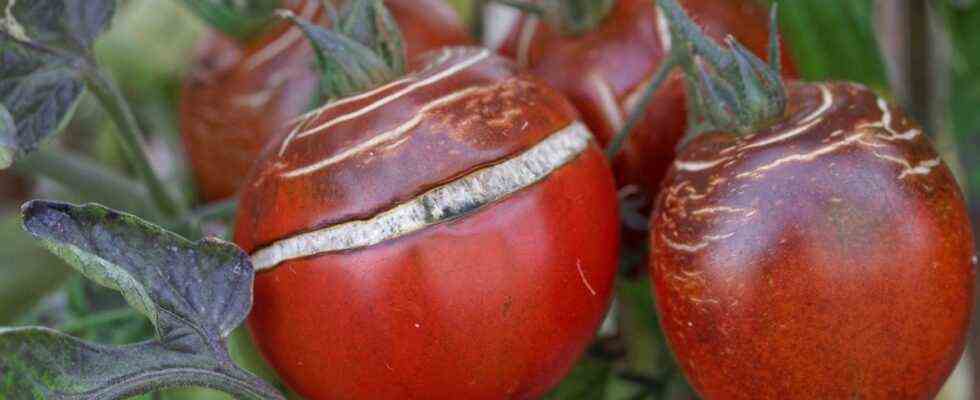Mildew
Downy mildew is a fungal disease, that is, caused by a fungus, well known to growers. This disease can destroy an entire crop, which is why it is considered the number 1 enemy in vegetable gardens. Certain conditions are favorable to its development:
- This disease is more common when the climate is humid and hot. It is also often seen appearing after several stormy episodes.
- The fungus responsible for late blight, Phytophthora infestans, is propagated by air.
- It can stay in the soil for a few years.
To recognize this disease, all you need to do is observe the leaves of your plants, which are the first to be affected. Brown spots appear on the right side, while on the reverse side you can see a sort of white powdery film. Then the fruits are also affected, then you can notice spots on them. Therefore, they should no longer be consumed and voila, your harvest is lost!
Fighting downy mildew
Vigilance is essential, because the faster you intervene, the more likely you are to get rid of it.
Remove affected parts
Here’s how to do it:
- Using a knife or secateurs, remove any parts of the plant that are contaminated. Be sure to cut in the healthy part to remove the entire disease attacked area. Indeed, the disease has a strong tendency to spread quickly, which is why it is important to observe the plants well to remove all traces of the disease as quickly as possible.
- Place the cut pieces in a bucket full of water.
- If the mildew has attacked the stem only on the surface, you can treat her rather than cut it.
- After the operation, disinfect your tools with 70 ° alcohol to prevent the spread of the fungus.
- Finally, rub your hands with mint.
Bordeaux mixture
It is probably the most effective treatment for late blight. Bordeaux mixture is a fungicide bluish in appearance made from water, copper sulphate and slaked lime. You can prepare it yourself, but it is also available ready to use at garden centers. If it is possible to use it in organic farming, its use is however controversial, because it is recognized as being harmful for the life of the grounds. The dosages must therefore be strictly observed and its use moderate. When using it, protect yourself with gloves and a mask and proceed as follows:
- Mix 10 to 20 g of the preparation with 1 liter of water. If it is possible to put less, it is important not to put more.
- Spray the mixture on the plant, not forgetting the undersides of the leaves. To act, prefer a day when there is no risk of rain.
- The operation must be repeated every two weeks.
- As harvest approaches, stop the treatment at least two weeks before and clean the fruits before eating them.
Baking soda and black soap
Several natural treatments against late blight prevent its reappearance on your tomato plants. Among these, you can turn to baking soda. This product has many uses including the treatment of certain diseases. Indeed, it will make it possible to obtain a less acidic pH and thus hamper the development of the fungus. To do this :
- Mix 1 teaspoon of baking soda and 1 teaspoon of black soap in 1 liter of water.
- Spray this mixture on the plants as soon as they are planted.
Sage infusion
The antifungal properties sage can also be used to treat tomato downy mildew. For that :
- Mix 200 g of officinal sage leaves with 10 cl of water.
- Bring the mixture to 80 ° C and let cool.
- Filter.
- Spray the pure mixture on the plants to be treated.

Essential oils
You can also turn to essential oils characterized by antifungal properties, such as rosemary with cineole which has already given convincing results against downy mildew. Since essential oils are not miscible in water, it is recommended to add them to a mixture prepared with water and black soap. The dosage is 20 drops of essential oil per liter of soapy mixture.
Prevent the appearance of mildew
There are several ways to limit the appearance of late blight.
- Prefer to grow tomatoes under shelter.
- Make your plantations without tightening them too much, it is advisable to leave between 50 cm and 1 m between each plant.
- When you water, water the feet of the plants to keep the leaves as dry as possible and prefer watering in the morning so that the water can evaporate during the day.
- If you are using compost, do not put contaminated plants in it, you risk spreading the fungus when it is used.
- Opt for planting different varieties of tomatoes. Admittedly, no variety is totally resistant to late blight, but some are found to be more resistant to the disease.
- You can also stagger planting and production.
- Finally, think about crop rotation which is a good way to prevent plants from being contaminated from year to year.
Garlic manure
To prevent the appearance of late blight, the garlic manure is a very effective preventive treatment. Just spray it on the leaves every 10 days. You can also put some on the floor.
Nettle manure
You can also opt for nettle manure. In addition to being effective, it is easy to prepare. Here’s what you just need to do:
- Collect nettles and chop them.
- Put in a container and cover with water at the rate of 1 l per 100 grams of nettles.
- Cover the container and set it aside.
- Stir the mixture every other day for a week.
- All you have to do is filter the nettles before watering your plants with the liquid manure.

